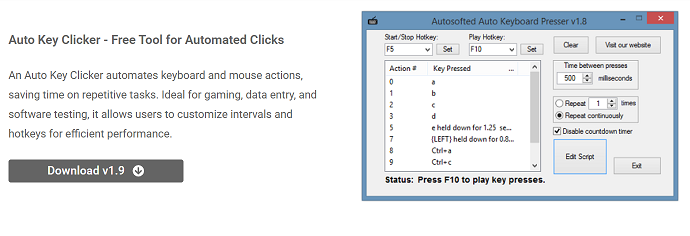A Complete Guide to AC Installation Services: What to Expect & How to Choose the Right System
Installing a new air conditioning (AC) system is a significant investment for any property owner. Whether you’re replacing an old unit or setting up a brand-new HVAC system in your home or office, professional AC installation services are critical to ensure energy efficiency, comfort, and long-term reliability.
In this comprehensive guide, we’ll walk you through everything you need to know about AC installation services—what to expect during the process, how to choose the right type of system, and tips for getting the most out of your new air conditioning system.
What Are AC Installation Services?
AC installation services involve the complete setup of a new air conditioning system, including selection, planning, installation, testing, and system optimization. These services are typically provided by certified HVAC technicians who are trained to install various types of systems, including central air conditioners, split AC units, ductless mini-splits, and more.
Why Professional Installation Matters
Installing an AC unit is not just about plugging it in and turning it on. Proper installation requires attention to electrical wiring, ductwork, refrigerant levels, drainage systems, and manufacturer specifications.
Key Reasons to Choose Professional AC Installation:
- Ensures correct sizing and placement
- Prevents energy waste and high electricity bills
- Complies with local building codes
- Maintains warranty coverage
- Reduces the risk of breakdowns and repairs
Different Types of AC Systems You Can Install
Choosing the right AC system depends on your space, usage requirements, and budget. Here’s an overview of the common types of systems:
Central Air Conditioning Systems
Ideal for large homes and commercial properties, these systems cool through a network of ducts.
Ductless Mini-Split Systems
Great for homes without ductwork or for adding cooling to specific rooms. Offers more flexibility in zoning.
Window AC Units
Perfect for small rooms and apartments. They are cost-effective and easy to install but limited in capacity.
Portable Air Conditioners
Ideal for temporary or mobile cooling solutions, though they may not be as efficient.
How to Choose the Right AC System for Your Needs
Several factors influence the selection of the most suitable AC unit:
1. Size and Capacity
Choosing the correct size (measured in BTUs) is essential. An oversized unit wastes energy, while an undersized one won’t cool your space properly.
2. Energy Efficiency Ratings
Look for SEER (Seasonal Energy Efficiency Ratio) ratings. Higher SEER values mean better efficiency and lower energy bills.
3. Climate Zone
Your region’s climate can determine the type of AC that will work best. Hotter climates may require higher capacity units.
4. Installation Area
Consider whether the installation area has existing ductwork or if ductless solutions are more viable.
5. Budget
Installation and long-term maintenance costs should align with your financial plan. Also factor in any available energy rebates or incentives.
Step-by-Step Process of AC Installation
Here’s what typically happens during a professional AC installation service:
Step 1: Initial Inspection and Load Calculation
Technicians assess your property and calculate cooling loads to determine the best unit size.
Step 2: Selecting the AC Unit
Based on the assessment, a suitable system is selected for performance and efficiency.
Step 3: Site Preparation
If necessary, old units are removed, and the site is prepared for installation. This may include modifications to ductwork or electrical wiring.
Step 4: Installation of the Unit
The indoor and outdoor units are installed, refrigerant lines are connected, and all components are sealed and secured.
Step 5: Electrical and Thermostat Connections
The system is wired to the electrical panel and connected to a thermostat (manual or smart).
Step 6: Testing and Quality Checks
Technicians run the system to check for cooling performance, leaks, airflow, and safety.
Common Mistakes to Avoid During Installation
Even with professional help, knowing what mistakes to avoid can protect your investment:
- Ignoring system size recommendations
- Poor placement of indoor or outdoor units
- Inadequate insulation in the ductwork
- Incorrect refrigerant levels
- Skipping professional post-installation inspections
Post-Installation Tips for Long-Term Efficiency
Once your new AC is installed, here are a few tips to ensure you get the most from your system:
✅ Schedule Regular Maintenance
Annual tune-ups help keep your AC in top condition and prevent unexpected breakdowns.
✅ Replace Air Filters Regularly
Clogged filters reduce airflow and efficiency. Replace them every 1–3 months.
✅ Use a Smart Thermostat
Smart thermostats optimize cooling schedules, saving you money and energy.
✅ Keep the Outdoor Unit Clear
Remove debris, leaves, or plants around the unit to ensure proper airflow.
Benefits of a New AC Installation
Investing in a new air conditioner offers multiple long-term benefits:
- Energy Efficiency: Modern systems consume less energy.
- Better Air Quality: New ACs come with improved filters and ventilation features.
- Increased Property Value: A new HVAC system is an attractive feature for homebuyers.
- Quieter Operation: Technology has significantly reduced noise levels.
- Smart Integration: Many new models can be integrated with home automation systems.
How to Choose the Right AC Installation Provider
Selecting the right HVAC contractor can make or break your experience. Here’s what to look for:
📌 Certifications and Licensing
Ensure the company has valid state licenses and certifications.
📌 Experience with Your Chosen System
Not all companies are experienced with every type of AC. Ask specifically about the model you are choosing.
📌 Transparent Pricing
A detailed quote with no hidden charges is a must.
📌 Warranty and After-Sales Support
Ensure they offer a workmanship guarantee and warranty support.
FAQs About AC Installation Services
Q: How long does it take to install a new AC system?
A: On average, it takes 4–8 hours, depending on the complexity of the system and whether there is existing ductwork.
Q: Is ductless AC better than central AC?
A: It depends on your needs. Ductless systems are great for zoning and energy savings, while central AC is ideal for whole-house cooling.
Q: Can I install an AC unit myself?
A: DIY installation is not recommended due to the technical complexity and safety regulations.
Q: How often should a new AC system be serviced?
A: At least once a year for optimal performance and efficiency.
Conclusion
A successful AC installation can transform your home’s comfort levels and energy efficiency. With so many options available, it’s essential to choose the right system for your space and rely on experienced professionals for installation.
Whether you’re building a new home or replacing an outdated unit, professional AC installation services ensure you enjoy years of reliable cooling. Remember, your comfort starts with a smart choice and expert execution.




